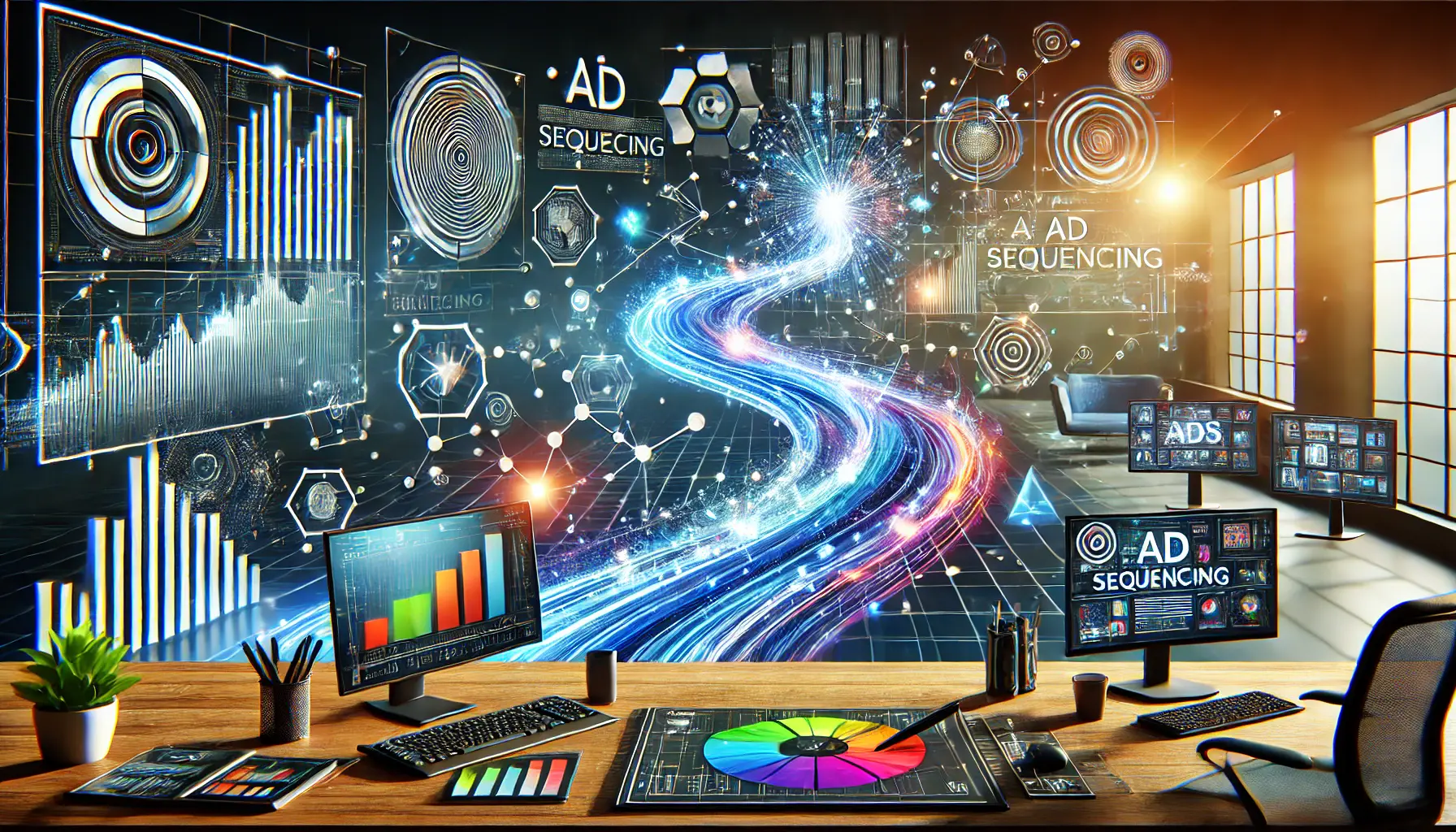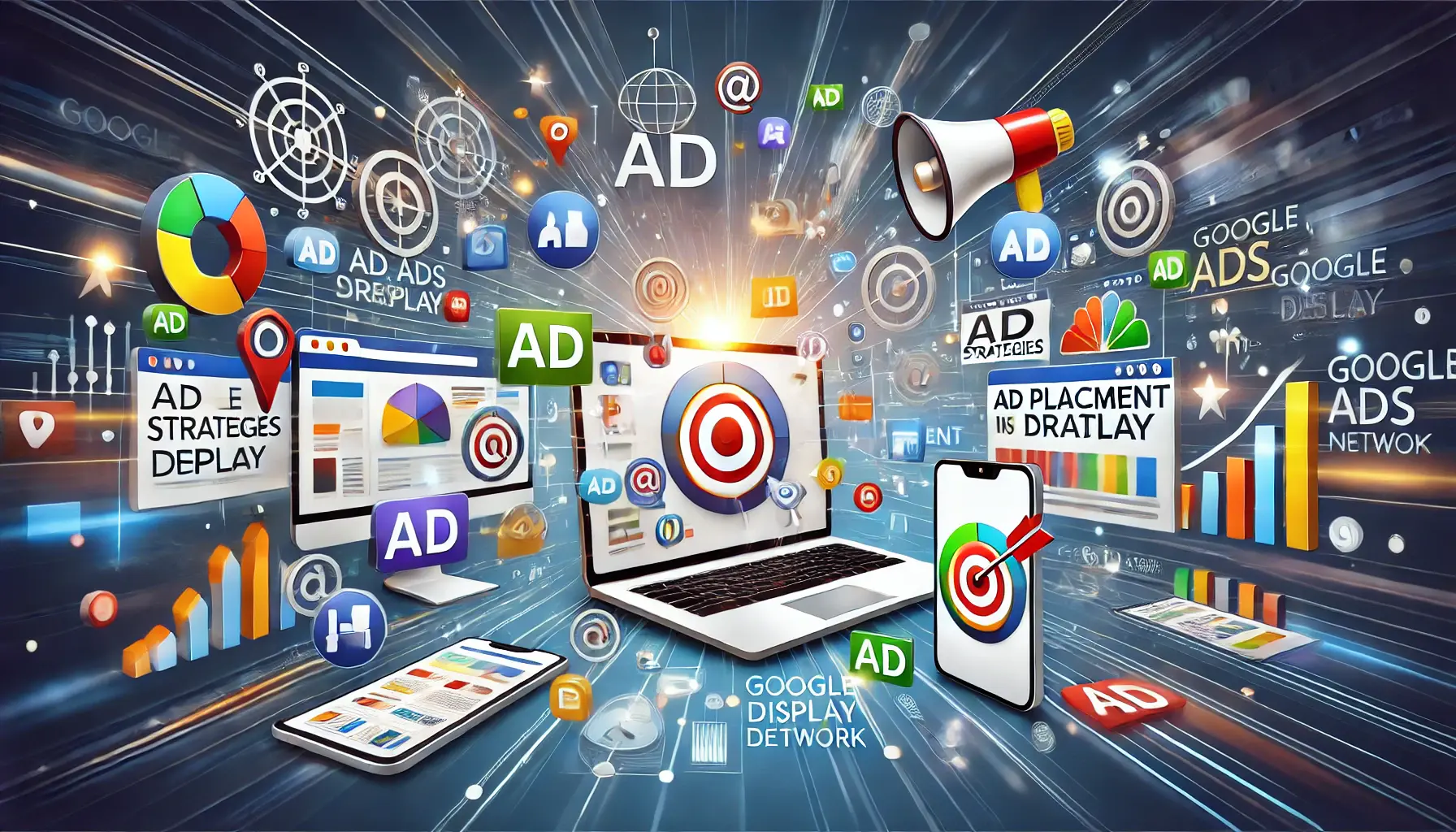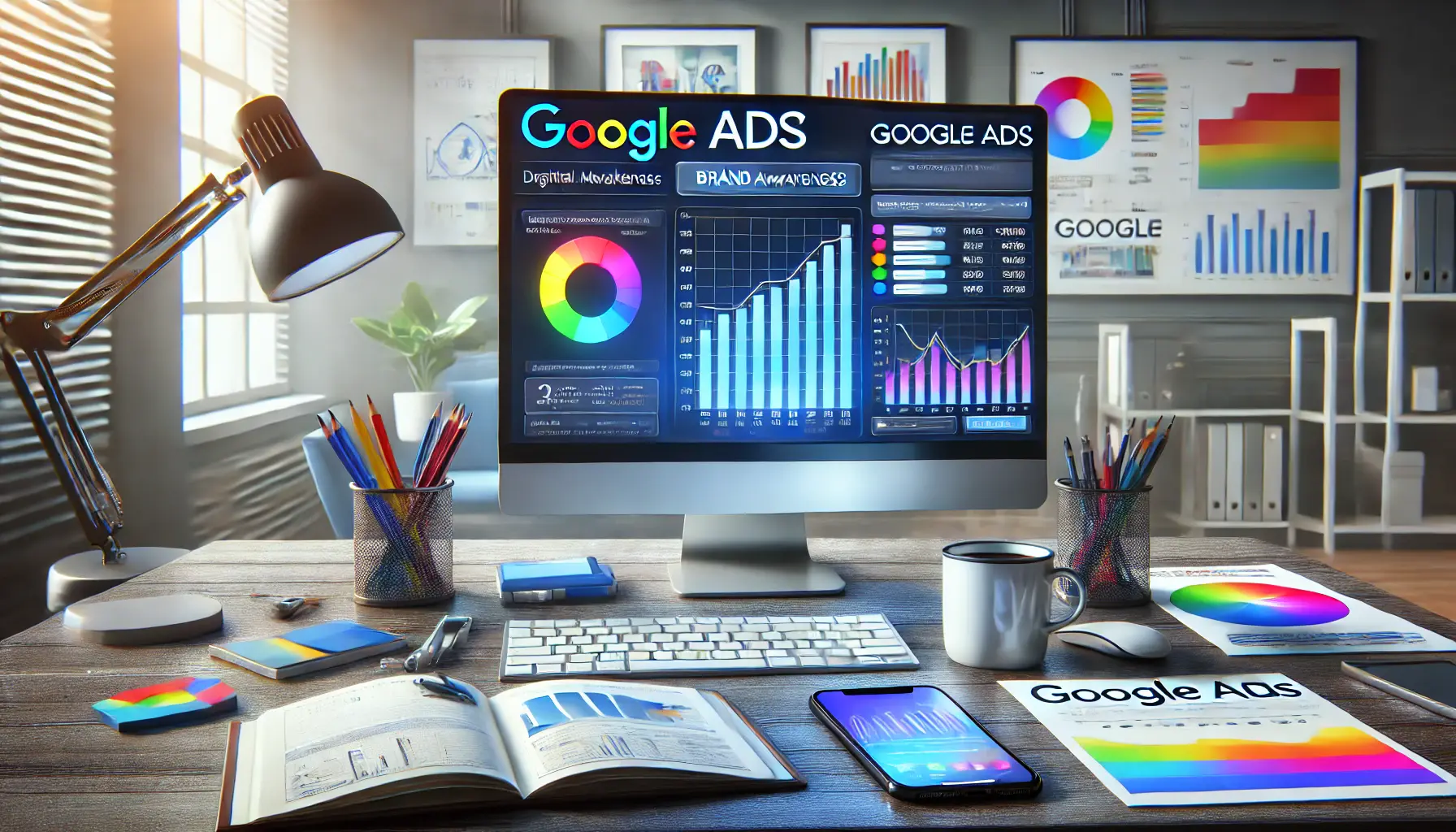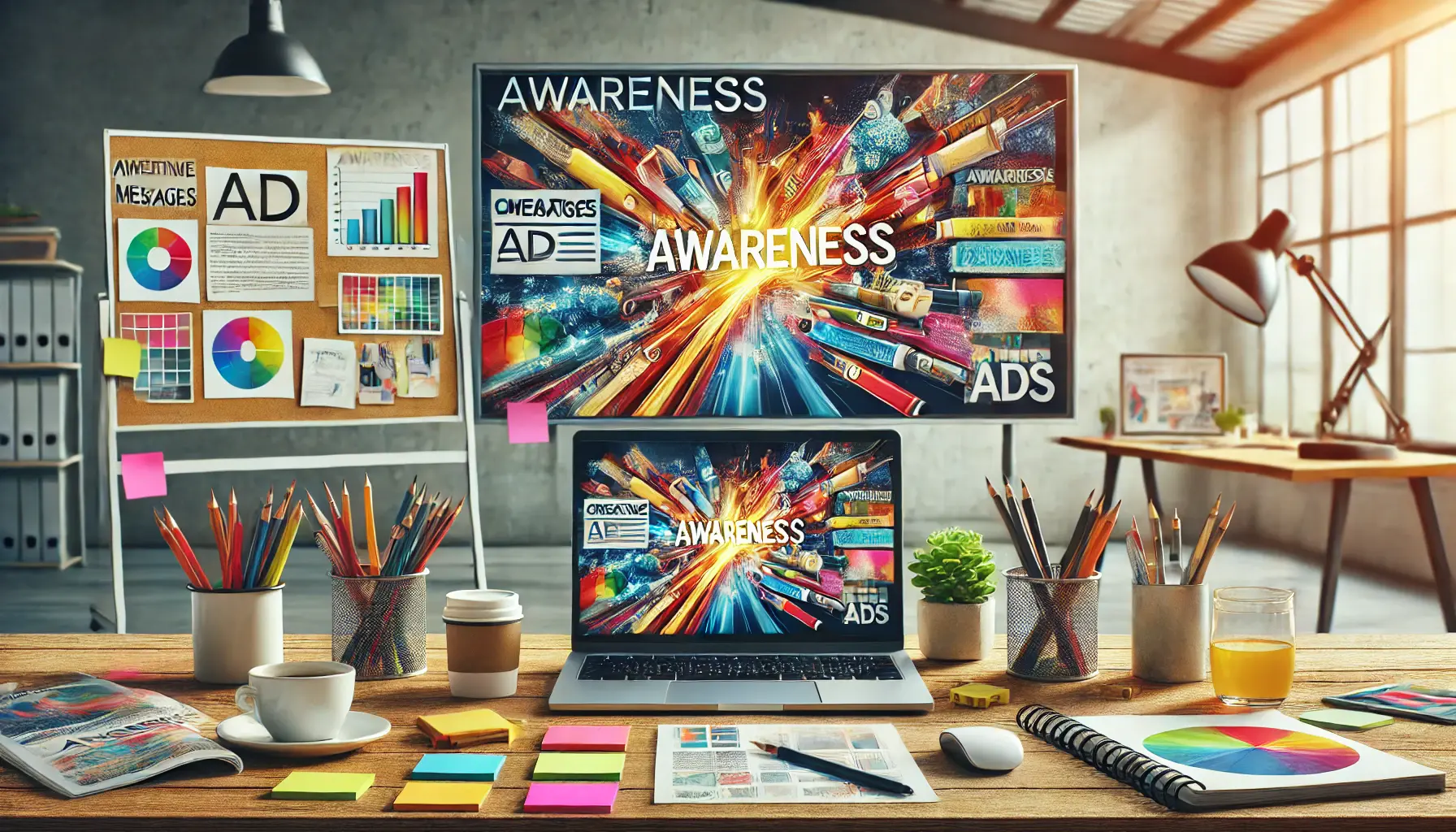Awareness is one of the most important stages within the customer’s journeyThe process a customer goes through from awareness to purchase and beyond., and thus one should create as many effective advertisements as possible.
During this period, your audience isn’t even aware of their needs or problems, which is why your ad content can plant that seed.
Optimizing your ad content for the awareness stage ensures that you not only capture attention but also position your brand as memorable and trustworthy.
In this article, we’ll explore strategies to refine your ad content, starting with understanding the nuances of the awareness stage.
- Understanding the Awareness Stage in Advertising
- Strategy 1: Crafting Compelling Visual Narratives
- Strategy 2: Personalization and Targeted Messaging
- Strategy 3: Engaging Content Formats for the Awareness Stage
- Strategy 4: Leveraging Social Media Platforms for Ad Content
- Conclusion: Mastering Ad Content for the Awareness Stage
- Frequently Asked Questions About Ad Content Optimization
Understanding the Awareness Stage in Advertising
The awareness stage marks the very first place your potential customers will interact with your brand.
It’s a stage of discovery and curiosity where you want to make sure your message resonates and sticks.
This is foundational because first impressions do indeed count, and your ad content plays a very important role in shaping perceptions about your brand.
But what exactly defines the awareness stage?
At its core, it’s about capturing attention and sparking interest.
People aren’t ready to make decisions yet; instead, they’re learning about their options.
Your goal is to intrigue them enough to explore further.

Conceptualizing the awareness stage through collaborative brainstorming.
Defining the Awareness Stage
The awareness stage is the first part of the marketing funnelA model that represents the stages a customer goes through in the buying process..
At this stage, people might not be aware of your product’s existence or perhaps even their own needs.
Your ad content should be the gentle nudge that starts getting them introduced to your brand, pointing out how you can solve their pain points.
- Emphasize storytelling and emotional connections to make your brand relatable.
- Use non-intrusive methods to showcase your value without pressuring for a sale.
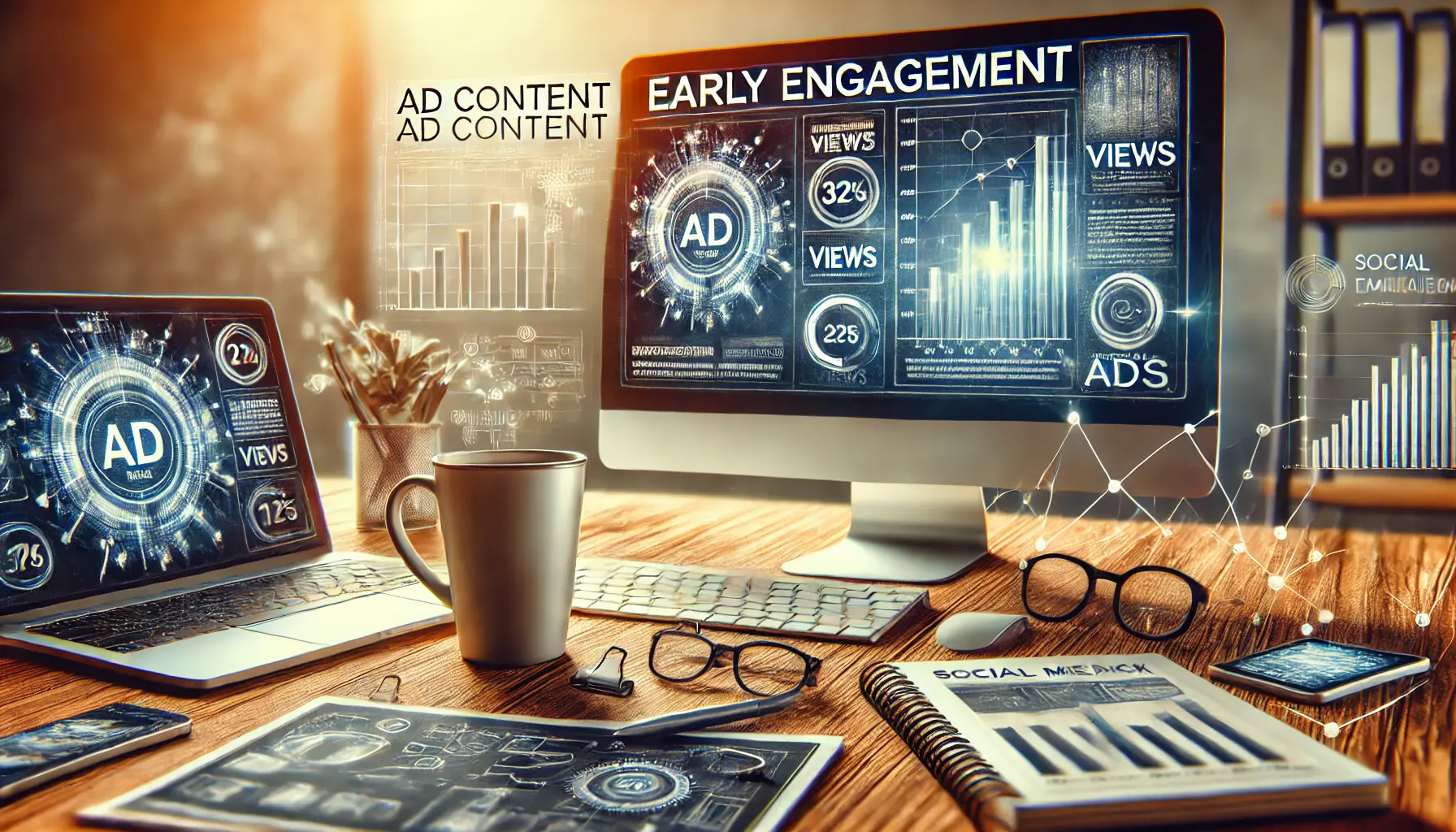
A workspace showcasing the impact of engaging ad content in early campaign stages.
Importance of Ad Content in Early Engagement
Ad content tailored for the awareness stage sets the tone for how your audience perceives your brand.
It’s your opportunity to create a lasting impression by delivering content that aligns with their interests and values.
- Visuals and messaging should evoke curiosity and align with the target audience’s preferences.
- Clear and concise messaging is essential to retain attention in a crowded digital space.
- Highlighting your unique value proposition helps differentiate your brand from competitors.

Representing the challenges advertisers face in capturing audience attention in a crowded digital space.
Common Challenges in Capturing Audience Attention
The digital landscape is saturated with advertisements, making it hard to stand out.
Understanding these challenges is key to creatively building ad content in ways that overcome them effectively.
- Ad Fatigue: Each target audience goes through a deluge of ads daily, causing disinterest.
- Short Attention Spans: You only have seconds to hook and maintain interest.
- Relevance: Irrelevant content makes users skip or avoid the ad altogether.
By facing these challenges head-on, you can build ad content that not only captures attention but also persuades audiences to take the next step in their journey with your brand.
The awareness stage is crucial for building first impressions and sparking curiosity among potential customers.
- Focus on relatable storytelling to connect with your audience.
- Highlight how your brand can address potential pain points.

A workspace dedicated to crafting compelling visual narratives for advertising.
Strategy 1: Crafting Compelling Visual Narratives
In the awareness stage, your ad content must captivate and engage your audience.
One of the most effective ways to achieve this is through compelling visual narratives.
Visual storytelling leverages imagery, videos, and design elements to convey your brand’s message, evoke emotions, and create memorable experiences.

A creative workspace emphasizing the use of visual storytelling techniques in advertising.
Leveraging Visual Storytelling Techniques
Visual storytelling is the representation of a narrative through visual media that your audience can relate to.
This approach can redefine your ad content, making it more engaging and relatable.
- High-Quality Imagery: Use appropriate images that not only appeal visually but also complement your brand’s message. Good-quality visuals command attention and portray professionalism.
- Develop a Consistent Visual Theme: Maintain consistency in colors, fonts, and design elements across all ad content to strengthen brand recognition.
- Incorporate Storytelling Elements: Create a narrative arc in your visuals that includes a beginning, middle, and end to keep the audience engaged.

A workspace focused on integrating brand identity into visual content.
Incorporating Brand Identity into Visuals
Your brand identity should be seamlessly integrated into your visual narratives to ensure your ad content is both recognizable and authentic.
- Brand Colors and Logos: Utilize your brand’s color palette and logo in your visuals to reinforce brand identity.
- Reflect Brand Values: Images and themes should reflect the core values and mission that your brand stands for.
- Maintain Visual Consistency: Ensure that all visual elements are cohesive and reflect the overall aesthetic of your brand.

A team analyzing successful visual campaigns to draw insights for future strategies.
Case Studies of Successful Visual Campaigns
Examining successful visual campaigns can provide valuable insights into how compelling visual narratives can enhance ad content during the awareness stage.
- Pepsi’s Rebranding Effort: In 2024, Pepsi announced their first rebrand in 15 years, accompanied by a major launch event featuring the Pepsi Pulse Collection. The campaign leveraged visually stunning storytelling to emotionally connect with consumers and reinforce their brand position.
- Native Advertising by BILD: The native ads, designed by Axel Springer Brand Studios in the genuine look and feel of BILD, communicated emotional and multimedia-centered content on all channels. This showcases visual storytelling at its best in engaging audiences and amplifying brand presence.
Using these techniques, you can frame ad content that captures attention while fostering a deeper connection with your audience during the awareness stage.
Visual storytelling can significantly elevate your ad content by creating emotional connections and memorable impressions.
- Use high-quality visuals to command attention.
- Develop a consistent visual theme to strengthen brand recognition.
- Incorporate storytelling elements to keep your audience engaged.

A workspace focused on crafting personalized and targeted messaging strategies for digital advertising.
Strategy 2: Personalization and Targeted Messaging
In today’s digital landscape, consumers expect ad content that resonates with their individual preferences and needs.
Personalization and targeted messaging are essential strategies in the awareness stage to capture attention and foster engagement.
By delivering tailored ad content, you can create meaningful connections with your audience, enhancing the effectiveness of your campaigns.

A workspace analyzing data for effective audience segmentation in digital advertising.
Utilizing Data for Audience Segmentation
Effective personalization begins with understanding your audience.
By analyzing data, you can segment your audience by demographics, behaviors, and interests to allow for more precise ad content delivery.
- Collect First-Party Data: Gather data from your audience through interactions on your website, social media, and email campaigns. This data proves to be invaluable for ad content personalization.
- Analyze Behavioral Patterns: Examine how users interact with your brand online to identify trends and preferences, informing your ad content strategy.
- Develop Detailed Buyer Personas: Create profiles representing different segments of your audience to guide the creation of targeted ad content.
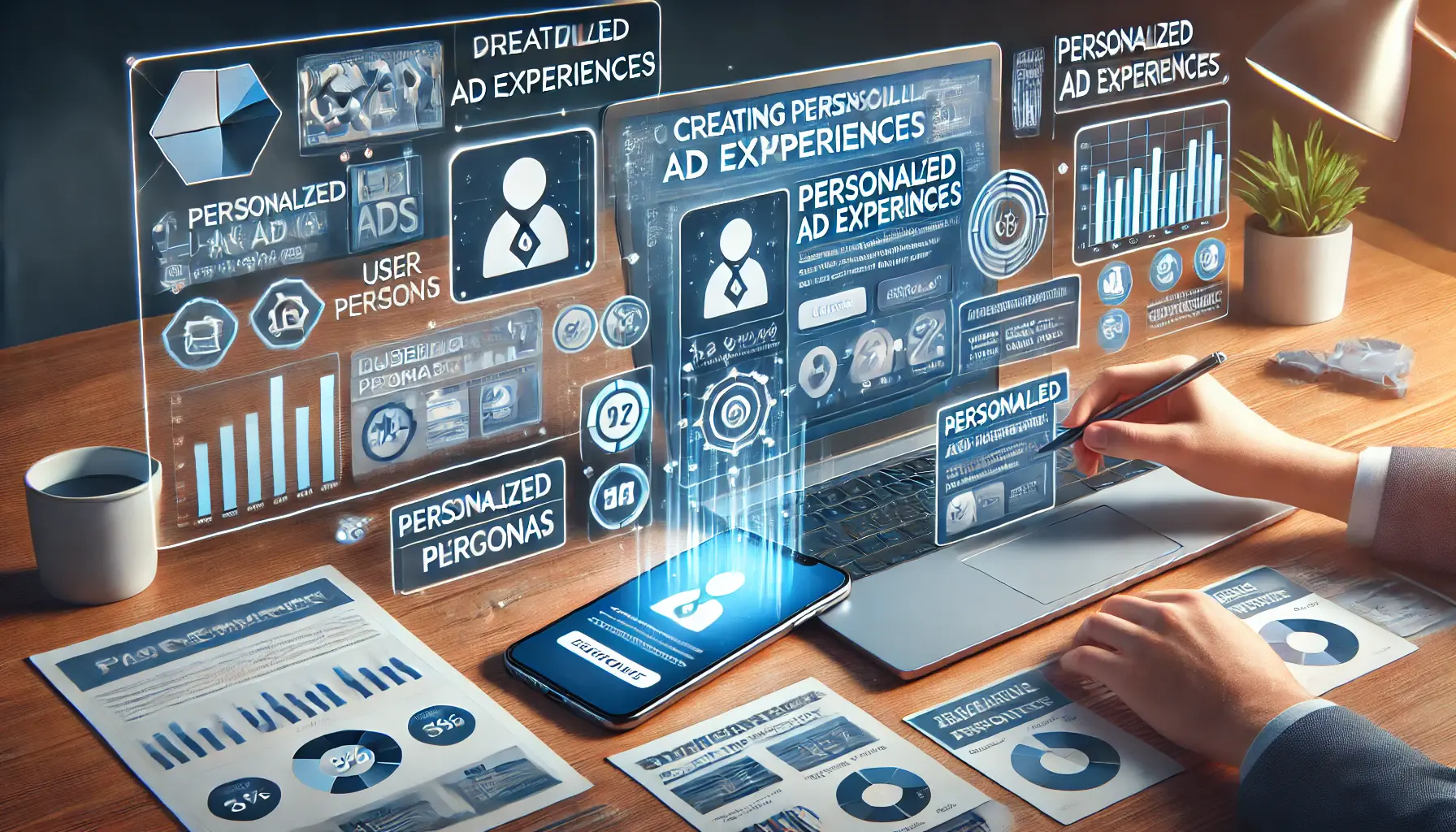
A workspace focused on creating personalized ad experiences for different user segments.
Creating Personalized Ad Experiences
Segmentation of the audience allows you to craft ad content that effectively targets every group.
Personalization of ad content significantly boosts engagement and conversions.
- Dynamic Content: Utilize technology to dynamically adjust ad content in real-time using live user data, ensuring the message is relevant and timely.
- Personalized Recommendations: Suggest products or services that best align with the user’s interaction with your brand.
- Localized Messaging: Adapt ad content to reflect the cultural and regional nuances of different audience segments.

A workspace utilizing digital tools and platforms for effective audience targeting in advertising.
Effective Targeting: Tools and Platforms
Applying the right tools and platforms ensures that a personalization and targeting-based ad content strategy is executed effectively.
- Customer Data Platforms (CDPs): Unify customer profiles through data integration from multiple sources for effective delivery of personalized ad content.
- Marketing Automation Tools: Automate the delivery of personalized ad content across multiple channels, enhancing efficiency and consistency.
- Artificial Intelligence (AI) and Machine Learning: Utilize AI-driven platforms to analyze data and predict user behavior, enabling more accurate targeting and personalization.
By embracing personalization and targeted messaging, you can create ad content that not only captures the attention of prospects in the awareness stage but also builds a foundation for lasting customer relationships.
Personalized ad content enhances relevance and increases engagement, making it a vital strategy during the awareness stage.
- Analyze audience data to craft tailored messaging.
- Utilize tools like AI to dynamically adjust content in real-time.
- Leverage localized messaging for better regional relevance.

A workspace filled with engaging content formats for the awareness stage of advertising.
Strategy 3: Engaging Content Formats for the Awareness Stage
In the awareness stage, selecting the right content formats is crucial to capture your audience’s attention and convey your brand message effectively.
Diverse and engaging ad content formats can significantly enhance user engagement and brand recall.

Interactive Content to Boost Engagement
Interactive content encourages active participation from your audience, making your ad content more memorable and impactful.
- Quizzes and Polls: Create quizzes or polls about your industry to catch the attention of your users while also learning their preferences.
- Interactive Infographics: Design infographics that display information interactively, ensuring better comprehension and keeping users engaged.
- AR Experiences: Leverage augmented reality to offer immersive experiences, allowing customers to virtually interact with your products or services.
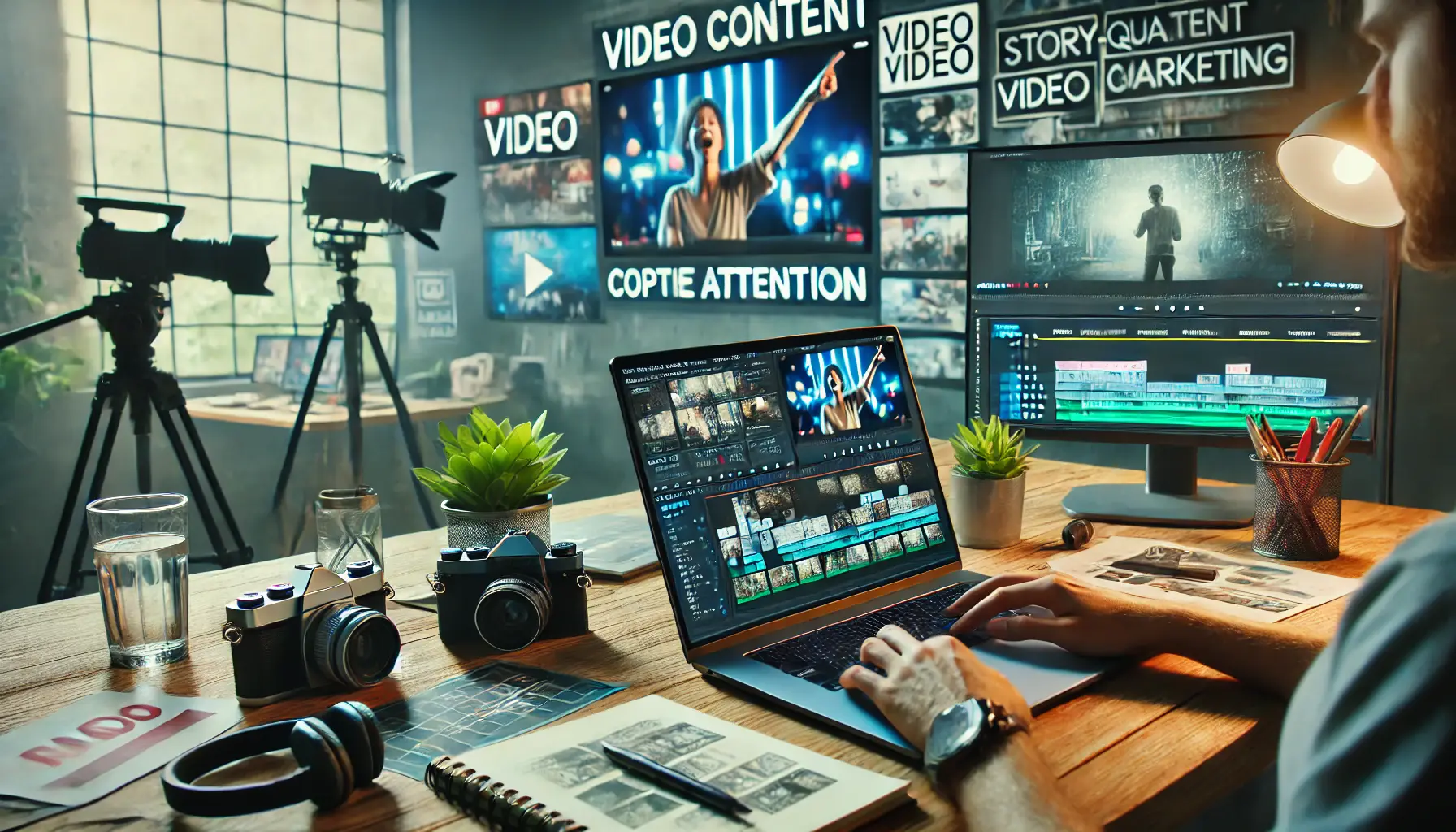
A creative workspace focused on crafting engaging video content to capture attention in digital marketing.
Video Content to Capture Attention
Video content is highly effective in communicating information quickly and engagingly, making it ideal for the awareness stage.
- Short-Form Videos: Use concise videos to draw attention quickly to the main aspects of your brand or product.
- Explainer Videos: Create videos that simplify complex concepts or demonstrate product usage, educating and engaging your audience.
- Live Streaming: Organize live sessions to connect with your audience directly, fostering community and immediacy.

A workspace focused on creating infographics and visual data representations for digital marketing.
Infographics and Visual Data Representation
Infographics transform complex data into an engaging and easy-to-understand format, making information more accessible and enjoyable.
- Data-Driven Infographics: Use statistics and data to visually inform and entertain your audience.
- Process Infographics: Represent processes or workflows visually, simplifying understanding and maintaining interest.
- Comparison Infographics: Compare products, services, or concepts to highlight unique selling points and aid decision-making.
By incorporating these engaging content formats into your ad content strategy during the awareness stage, you can effectively capture your audience’s attention and encourage them to explore your brand further.
Choosing diverse and interactive content formats boosts engagement and enhances your ad content’s effectiveness.
- Create quizzes, polls, and AR experiences to encourage participation.
- Utilize video formats for concise and engaging storytelling.
- Design infographics to present complex data in an appealing way.

A workspace focused on leveraging social media platforms to enhance ad content in digital marketing.
Strategy 4: Leveraging Social Media Platforms for Ad Content
In the awareness stage, utilizing social media platforms is essential for distributing your ad content effectively.
These platforms offer vast audiences and diverse tools to enhance your brand’s visibility and engagement.

A workspace focused on selecting the right social media channels for a targeted advertising campaign.
Selecting the Right Social Media Channels
Choosing the appropriate social media channels is crucial for reaching your target audience with your ad content.
- Identify Your Audience: Understand the demographics and preferences of your target audience to select platforms they frequent.
- Platform Strengths: Recognize the unique features of each platform. For instance, Instagram is visual-centric, while LinkedIn caters to professionals.
- Competitive Analysis: Observe where your competitors are active and assess the engagement levels on those platforms.

A workspace focused on creating platform-specific ad content for different social media platforms.
Creating Platform-Specific Ad Content
Tailor your ad content to the nuances of each social media platform for better effectiveness.
- Instagram: Utilize high-quality imagery and short-form videos with concise captions that drive user action.
- Facebook: Combine rich text, images, and videos to create informative and shareable content.
- Twitter: Craft short, impactful messages with relevant hashtags to increase visibility.
- LinkedIn: Share professional and insightful content that resonates with industry experts and businesses.

A workspace focused on using social media advertising tools to optimize digital marketing campaigns.
Utilizing Social Media Advertising Tools
Social media platforms provide advertising tools that can amplify the reach and impact of your ad content.
- Targeted Ads: Use demographic, geographic, and interest-based targeting to reach specific audience segments.
- Analytics: Monitor ad performance metrics to understand engagement levels and optimize future campaigns.
- Ad Formats: Test carousel ads, stories, and sponsored posts to identify which formats resonate most with your audience.
These social media publishing channels will help you distribute your ad content more effectively in the awareness stage of a customer’s journey, building a wider reach for your brand.
Social media platforms provide vast opportunities for amplifying ad content during the awareness stage.
- Select platforms based on audience demographics and preferences.
- Tailor ad content to align with each platform’s strengths.
- Leverage tools like targeted ads and analytics for maximum impact.
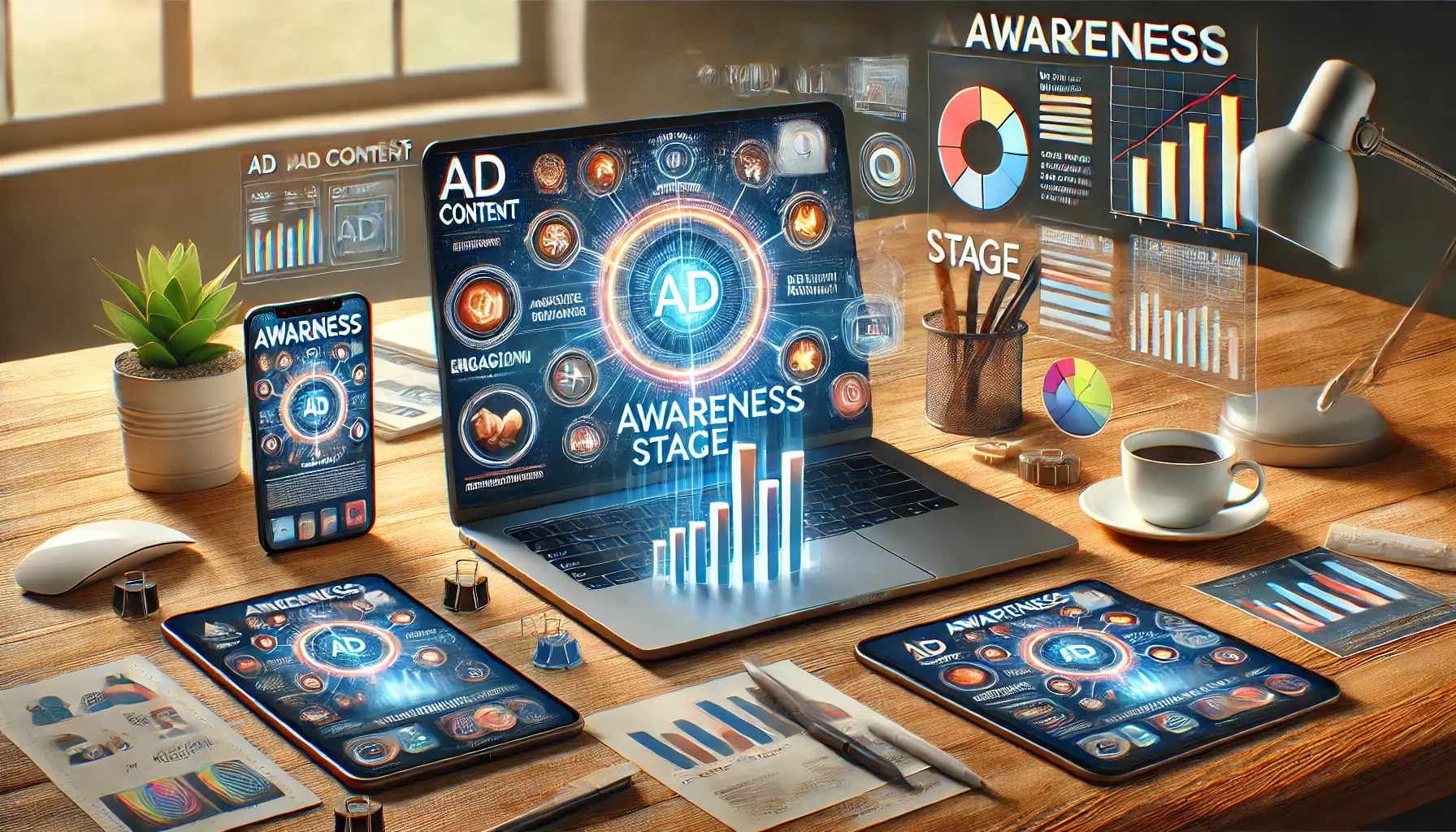
A workspace focused on mastering ad content for the awareness stage of the customer journey.
Conclusion: Mastering Ad Content for the Awareness Stage
Creating effective ad content for the awareness stage is vital for building brand recognition, fostering audience engagement, and establishing trust.
By leveraging the strategies outlined in this article, you can ensure that your ad content not only captures attention but also positions your brand as a leader in its space.
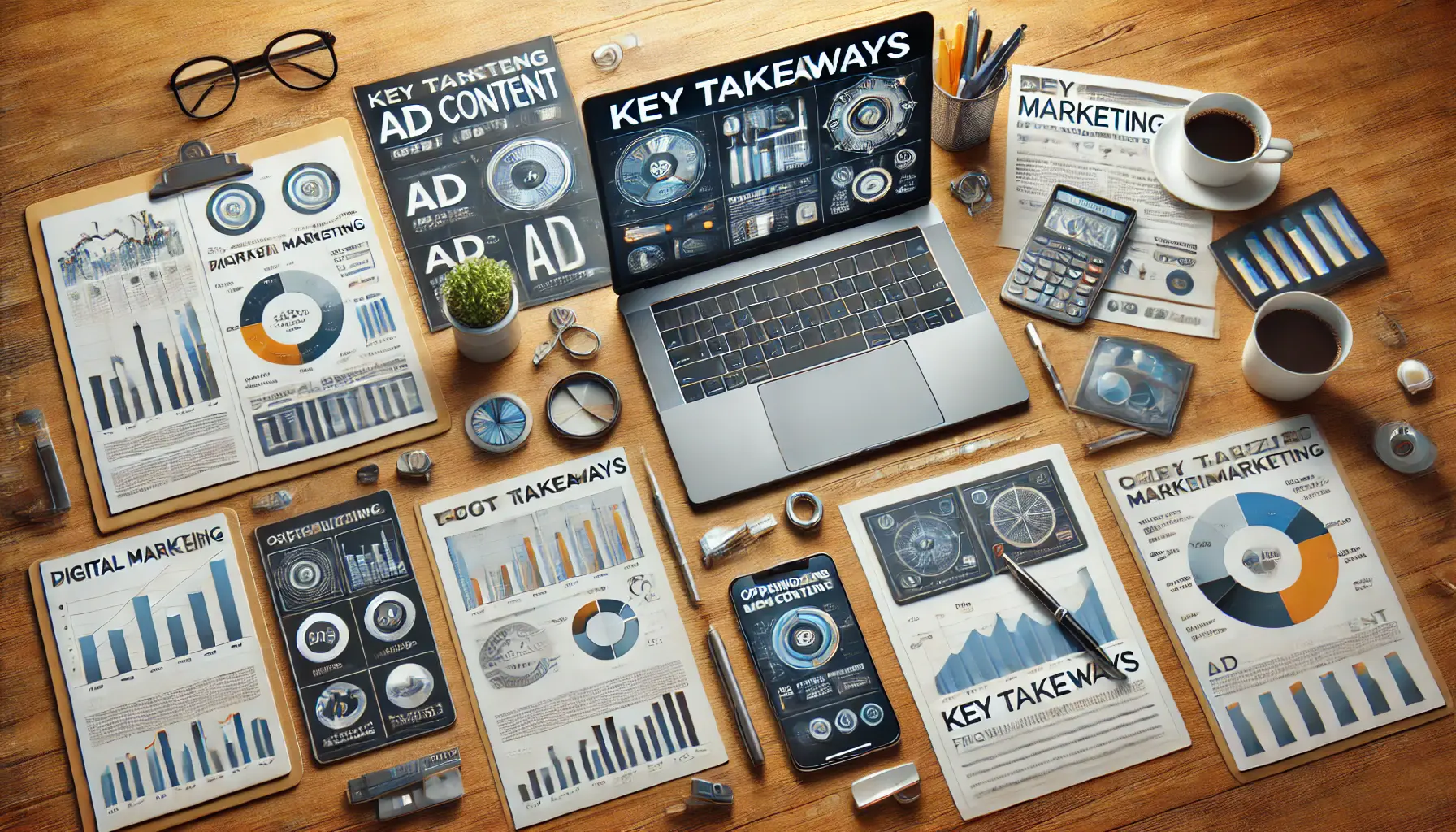
A workspace dedicated to refining ad content and summarizing key takeaways for optimization.
Key Takeaways for Optimizing Ad Content
Following are the most effective approaches to ad content optimization within the awareness stage:
- Create Immersive, Story-Driven Imagery: Use storytelling, high-quality visuals, and consistent branding to craft ad content that resonates with your audience.
- Personalization and Targeted Messaging: Leverage audience data to create relevant and individualized ad experiences, matching the unique preferences and interests of the viewer.
- Diverse Content Formats: Incorporate interactive content, videos, and infographics to deliver messages in ways that captivate and inform.
- Leverage Social Media Platforms: Select the right channels, create platform-specific ad content, and use advanced advertising tools to enhance visibility and engagement.

A workspace focused on ad content optimization for better performance and results.
Why Ad Content Optimization Matters
Optimizing ad content for the awareness stage lays the foundation for long-term success in your marketing campaigns.
It ensures your brand connects with potential customers effectively, setting the stage for stronger relationships and higher conversions as they progress through the customer journey.
By focusing on creating ad content that is visually appealing, personalized, engaging, and strategically distributed, you can outperform competitors and solidify your position in the market.

A workspace focused on forward-thinking strategies for digital marketing.
Looking Ahead
As digital marketing continues to evolve, adaptability and innovation are key.
Periodically revisiting ad content strategies will help you stay relevant and effectively capture your audience’s attention during the awareness stage.
By thoughtfully implementing the ad content strategies described in this article, you will not only improve your ad content but also build a solid foundation for enduring marketing success.
Optimizing ad content for the awareness stage ensures your brand connects effectively with potential customers, building trust and fostering engagement.
- Focus on storytelling, personalization, and diverse content formats.
- Leverage social media to amplify your message and reach.
- Regularly revisit strategies to adapt to changing market trends.
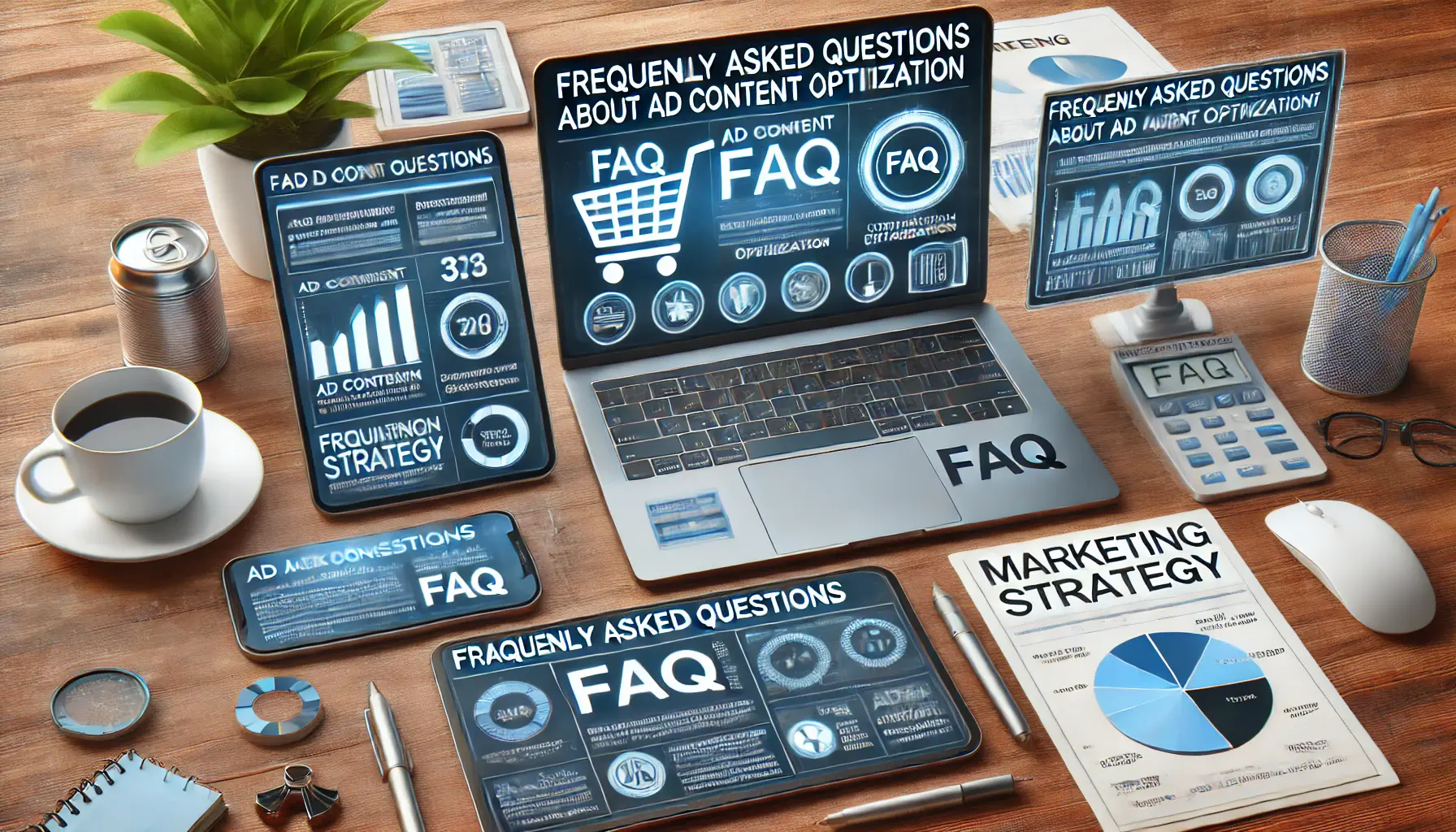
A workspace focused on analyzing and answering frequently asked questions about ad content optimization.
Your campaigns can be managed by an agency specialized in Google Ads, check out our service page.
Frequently Asked Questions About Ad Content Optimization
Addressing common inquiries can enhance your understanding of optimizing ad content during the awareness stage.
Ad content optimization involves refining advertisements to improve their effectiveness, ensuring they resonate with the target audience and achieve desired marketing objectives.
The awareness stage is where potential customers first encounter your brand.
Effective ad content here builds recognition and sets the foundation for future engagement.
Visual storytelling uses imagery and narratives to convey messages, making ads more engaging and memorable, thereby capturing audience attention effectively.
Personalization tailors ad content to individual preferences, increasing relevance and engagement, which can lead to higher conversion rates.
Interactive content, videos, and infographics are particularly effective, as they engage audiences and convey information succinctly.
Social media platforms offer vast audiences and tools for targeted advertising, enhancing the reach and impact of your ad content.
Common challenges include ad fatigue, short attention spans, and relevance.
Overcoming these challenges requires creative and targeted ad content strategies.
Data analysis provides insights into audience behaviors and preferences, helping in creating better, more effective, and targeted ad content.
Consistent branding across ad content builds brand recognition and trust, making your brand more memorable to the audience.

